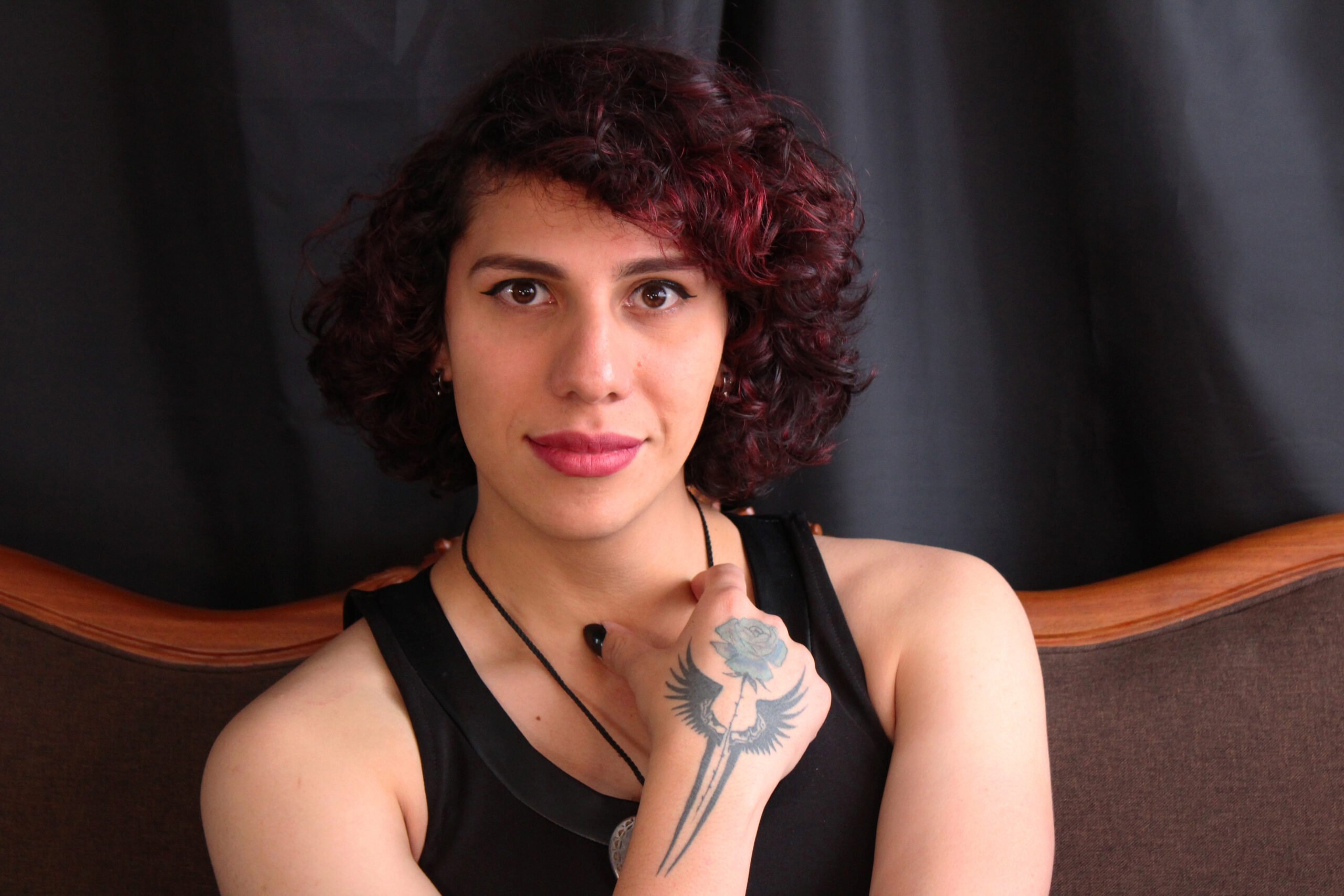Now Reading: Exploring Your Gender: More Than Just an “Am I Trans Quiz”
-
01
Exploring Your Gender: More Than Just an “Am I Trans Quiz”
Exploring Your Gender: More Than Just an “Am I Trans Quiz”

Figuring out who you are can be one of life’s biggest and most personal journeys. For some, this journey includes questioning their gender identity. You might have found yourself typing “am i trans quiz” into a search bar, looking for a quick answer to a very complex question. While online quizzes can be a starting point, understanding your gender identity is a deeper, more personal process.
This guide is here to walk with you through that exploration, offering insights, information, and support beyond a simple quiz. We’ll explore what gender identity means, the signs you might be transgender, and how to navigate your feelings in a healthy and affirming way. This journey is yours, and taking the time to understand it is a powerful first step.
Key Takeaways
- Gender Identity vs. Expression: Gender identity is your internal sense of self, while gender expression is how you show your gender to the world. They don’t always match societal expectations.
- Quizzes Are a Starting Point: An “am i trans quiz” can help you organize your thoughts, but it cannot definitively tell you if you are transgender. Your identity is your own to define.
- Gender Dysphoria is Common but Not Universal: Many, but not all, transgender people experience gender dysphoria, which is the distress felt when one’s gender identity doesn’t align with their assigned sex at birth.
- Exploration is Healthy: It’s okay to question and explore your gender. Trying new pronouns, names, or styles of dress in safe spaces can be a valuable part of the process.
- Support is Crucial: Connecting with trusted friends, family, or support groups can make a significant difference in your journey of self-discovery.
What Does It Mean to Be Transgender?
Being transgender means your internal sense of being male, female, a blend of both, or neither (your gender identity) is different from the sex you were assigned at birth. For example, someone assigned male at birth who knows deep down that they are a woman is a transgender woman. Conversely, someone assigned female at birth who identifies as a man is a transgender man. It’s important to remember that gender identity is separate from sexual orientation.
Being transgender is about who you are, while sexual orientation is about who you are attracted to. The transgender umbrella is vast and includes many different identities, such as non-binary, genderfluid, and agender. Each person’s experience is unique, and there is no single “right” way to be trans. This internal sense of self is the core of one’s identity.
Understanding Gender Identity
Gender identity is a deeply personal and internal feeling. It’s not something that can be seen from the outside. You can’t know someone’s gender identity just by looking at them. It’s about how you see yourself. For many people (cisgender people), their gender identity aligns with the sex they were assigned at birth. For transgender people, it does not.
This feeling isn’t a choice or a phase; it’s a fundamental part of who a person is. Exploring this can be confusing, especially with societal pressures to fit into specific boxes. An “am i trans quiz” might ask questions that touch on these feelings, but the answers can only come from you. This journey of self-discovery is valid and important.
Gender Expression vs. Gender Identity
While they are related, gender identity and gender expression are two different things.
- Gender Identity: Your internal sense of self.
- Gender Expression: How you present your gender to the outside world. This includes your name, pronouns, clothing, haircut, and behavior.
Someone can identify as a man (gender identity) but enjoy wearing dresses and makeup (gender expression). Another person might be non-binary but present in a way that society reads as traditionally masculine or feminine. There are no rules. Your expression is a way to show the world who you are, but it doesn’t define your identity. It’s all about what feels authentic and comfortable for you.
Why People Search for an “Am I Trans Quiz”
The search for an “am i trans quiz” often comes from a place of deep questioning and a desire for clarity. When your internal feelings don’t match the expectations placed upon you, it can be isolating and confusing. You might feel like something is “off” but not have the words to describe it. An online quiz seems like a straightforward tool to find a simple answer.
It provides a structured way to think about feelings you may have been having for a long time. Questions about your childhood, your feelings about your body, and how you wish to be seen by others can validate your experiences. While these quizzes aren’t diagnostic tools, they can serve as a mirror, reflecting your own thoughts back to you and showing you that you’re not alone in asking these questions.
The Need for Validation
One of the biggest reasons people seek out an “am i trans quiz” is the need for validation. You might wonder, “Are my feelings real? Do other people feel this way?” A quiz can feel like an objective third party that confirms your experiences are valid. Seeing questions that resonate with your own life can be incredibly affirming.
It suggests that your feelings are common enough to be included in a list of potential signs of being transgender. This can be the first step toward accepting your feelings as real and important, rather than dismissing them. It can provide a sense of relief and the courage to explore your identity further, knowing that a community of people has walked a similar path.
Seeking a Simple Answer to a Complex Question
The journey of understanding gender identity is rarely simple. It’s filled with nuance, self-reflection, and sometimes confusion. In a world that often prefers clear-cut labels, it’s natural to want a quick, easy answer. An “am i trans quiz” promises just that: answer a few questions and get a result that tells you who you are. This desire for simplicity is understandable. However, it’s crucial to recognize that your identity is far more complex than any online quiz can capture. While it can be a helpful tool for self-reflection, the real answer can only come from within, over time, and with careful consideration of your own feelings and experiences.
Common Signs and Feelings That May Lead to Questioning
While everyone’s journey is unique, there are some common experiences that might lead a person to question their gender identity. These feelings can start in early childhood or emerge later in life.
- Gender Dysphoria: A feeling of distress or discomfort when your physical body or the social role you’re expected to play doesn’t match your internal gender identity.
- A Strong Sense of “Knowing”: An unshakable, internal feeling that you are a gender different from the one you were assigned.
- Gender Euphoria: A feeling of joy, excitement, or profound rightness when you are seen as your true gender. This can happen when someone uses your correct pronouns or when you wear clothing that affirms your identity.
- Relating More to People of a Different Gender: Feeling a stronger connection or sense of belonging with a gender group that is not the one you were assigned.
- Discomfort with Puberty: Feeling distressed as your body develops secondary sex characteristics (like a deeper voice, facial hair, or breast development) that don’t align with your gender identity.
What is Gender Dysphoria?
Gender dysphoria is the clinical term for the significant distress a person can feel due to the mismatch between their gender identity and their sex assigned at birth. This isn’t just a slight discomfort; it can be a persistent and painful feeling that impacts mental health and daily life. It can manifest in different ways:
- Social Dysphoria: Distress from being misgendered (called the wrong name or pronouns) or having to perform a social role that feels inauthentic.
- Body Dysphoria: Discomfort or distress related to one’s physical characteristics, such as their chest, genitals, or voice.
It’s important to note that not all transgender people experience dysphoria. Some people discover their identity through feelings of gender euphoria—the joy of being seen correctly—rather than the pain of being seen incorrectly.
Exploring Gender Euphoria
Gender euphoria is the powerful and positive counterpart to dysphoria. It’s that warm, happy, and deeply affirming feeling you get when your gender identity is recognized and respected. For some, it’s a much more powerful indicator of being trans than dysphoria. You might experience gender euphoria when:
- Someone uses your chosen name and pronouns for the first time.
- You try on a piece of clothing that makes you feel truly like yourself.
- You see yourself in the mirror and recognize the person looking back as your true self.
- You bind your chest for the first time and feel a sense of flatness and relief.
- You get a haircut that aligns with your identity and feel a surge of confidence.
Focusing on what brings you joy can be a more constructive way to explore your gender than focusing only on what causes you pain. Chasing these moments of euphoria can be a guiding light on your journey.
|
Area of Exploration |
Examples of Dysphoria (Discomfort) |
Examples of Euphoria (Joy) |
|---|---|---|
|
Social |
Cringing when hearing your birth name or old pronouns. |
A friend using your chosen name and pronouns correctly. |
|
Physical |
Feeling deep discomfort with your chest or facial hair. |
Feeling a sense of rightness after binding or shaving. |
|
Expression |
Feeling like you’re wearing a costume in certain clothes. |
Finding an outfit that makes you feel powerful and authentic. |
|
Internal |
A persistent feeling that something is “wrong.” |
A moment of clarity and peace when you think “I am a man/woman/non-binary.” |
Beyond the “Am I Trans Quiz”: Healthy Ways to Explore Your Gender

So, you’ve taken an “am i trans quiz” and are still pondering the results. What’s next? The most important thing to do is to continue exploring in a way that feels safe and comfortable for you. This isn’t a race to the finish line. It’s a journey of self-discovery that you can take at your own pace. The goal is not to find a label immediately but to understand yourself better.
This exploration can be a private process, or you can choose to share it with trusted individuals. There is no right or wrong way to go about it. The key is to be gentle with yourself and allow yourself the space to experiment and learn what feels right for you. Remember, questioning is a healthy and normal part of figuring yourself out.
Start a Gender Journal
One of the most powerful tools for self-reflection is a journal. Dedicate a notebook or a digital document to your thoughts and feelings about gender. You don’t have to write in it every day, but try to capture moments when gender is on your mind. You could write about:
- Days when you felt particularly good or bad about yourself, and why.
- Your reactions to being gendered by others.
- Fantasies or daydreams about living as a different gender.
- Feelings of dysphoria or euphoria.
- Your thoughts after taking an “am i trans quiz.”
Over time, this journal can reveal patterns in your feelings and provide valuable insights. It’s a private space where you can be completely honest with yourself without fear of judgment.
Experiment in Safe Spaces
Experimentation is a key part of exploration. Think of it like trying on clothes to see what fits. You can experiment with your gender expression in low-stakes environments.
Trying New Pronouns and Names
You can start by trying out a new name or pronouns online. Create an anonymous social media account or join a gaming community where you can introduce yourself with a different identity. There are also websites like the Pronoun Dressing Room that let you see how it feels to have sentences written about you with different pronouns.
Experimenting with Presentation
You can also experiment with your physical presentation. This could mean trying different clothes, getting a new haircut, or exploring makeup. You can do this in the privacy of your own home at first. See how it feels to wear clothes typically associated with a different gender. Does it feel like a costume, or does it feel like you’re finally seeing yourself? These small experiments can provide big clues about your identity.
Finding Support on Your Journey
You don’t have to go through this journey alone. Finding a supportive community can make all the difference. Connecting with people who understand what you’re going through can combat feelings of isolation and provide a space for you to be your authentic self. Support can come from friends, family, support groups, or a professional therapist. When seeking support, it’s important to find people who are affirming and respectful of your journey.
A strong support system can provide encouragement, answer questions, and celebrate your moments of self-discovery. As you navigate your identity, having a reliable network to lean on is invaluable. Some resources, like those found on sites such as forbesplanet.co.uk, can offer broader perspectives on personal growth and development that complement this specific journey.
Talking to Friends and Family
Opening up to friends and family can be a scary but rewarding step. It’s often best to start with the person you trust the most—someone you believe will be open-minded and supportive. You don’t have to have all the answers before you talk to them. You can simply say, “I’ve been questioning my gender identity and I could use someone to talk to.” You can share as much or as little as you feel comfortable with. Be prepared for a range of reactions. Some people may be immediately supportive, while others may need time to understand. Providing them with resources (like articles or websites) can help them learn.
Finding a Therapist or Counselor
A therapist who specializes in gender identity can be an incredible resource. They can provide a safe, confidential space for you to explore your feelings without judgment. A good therapist will not tell you who you are but will help you find the answers for yourself. They can help you manage feelings of dysphoria or anxiety, develop coping strategies, and navigate social and medical transition if that is a path you choose to take. Look for a therapist who has experience working with transgender and gender-nonconforming clients. Psychology Today has a searchable database that allows you to filter for therapists with this specialty.
Connecting with the Transgender Community
Connecting with other transgender and gender-questioning people can be incredibly validating. Hearing their stories can help you feel less alone and give you the language to describe your own experiences. There are many ways to connect with the community:
- Online Forums: Websites like Reddit have active communities (e.g., r/asktransgender) where you can ask questions anonymously.
- Local LGBTQ+ Centers: Many cities have LGBTQ+ centers that host support groups for transgender and questioning individuals.
- Social Media: Following transgender creators on platforms like Instagram, TikTok, and YouTube can provide a sense of community and visibility.
Frequently Asked Questions (FAQ)
1. Can an “am i trans quiz” tell me for sure if I’m trans?
No, an online quiz cannot definitively tell you if you are transgender. These quizzes are best used as tools for self-reflection to help you organize your thoughts. Your gender identity is a personal truth that only you can define for yourself, often through a process of exploration and introspection.
2. Is it just a phase?
For most people who seriously question their gender, it is not a phase. While exploration is a journey, the core feelings of gender identity are typically stable and deeply rooted. However, it’s okay to take your time to figure things out without pressure.
3. Do I have to have gender dysphoria to be trans?
No. While many transgender people experience gender dysphoria, it is not a requirement. Some people’s journeys are guided more by the pursuit of gender euphoria—the joy and rightness they feel when their gender is affirmed.
4. What’s the difference between being transgender and non-binary?
“Transgender” is an umbrella term for anyone whose gender identity doesn’t align with their sex assigned at birth. “Non-binary” falls under this umbrella and refers to people whose gender identity is not exclusively man or woman. A non-binary person is transgender, but not all transgender people are non-binary (e.g., a trans woman is a woman).
5. Do I have to medically transition to be trans?
Absolutely not. Being transgender is about your internal identity. Social transition (changing your name, pronouns, and expression) is valid on its own. Medical transition (hormones or surgeries) is a personal choice that some, but not all, transgender people pursue to align their bodies with their identity. There is no one way to be trans.

















